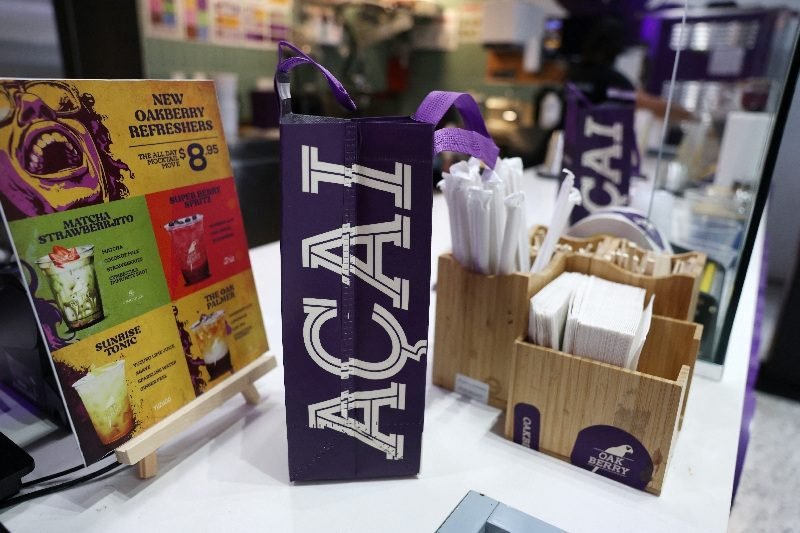U.S. Consumers of Açaí Face Rising Tariff Pressures
The beloved açaí berry, commonly cherished in the United States for its health benefits and delicious taste, is currently under the influence of expanding tariffs. This situation is affecting both suppliers and consumers as the demand for this superfood continues to grow. Let’s take an in-depth look at the implications of these tariffs on the U.S. market.
Açaí’s Popularity in the U.S.
The açaí berry has become a staple in many American households, especially among health-conscious individuals. It is often featured in smoothies, bowls, and snacks due to its rich nutritional profile. Packed with antioxidants, fiber, and heart-healthy fats, the berry has garnered a loyal following. The increasing trend of incorporating açaí into diets has contributed to a booming market for this fruit.
Growth in Açaí Consumption
In recent years, the consumption of açaí in the U.S. has surged. Many consumers are turning to this berry as a natural alternative to sweet treats. Restaurants, cafes, and juice bars have added açaí bowls to their menus, making the berry a part of everyday dining. This surge in popularity has led to an amplified demand that challenges suppliers and importers.
The Impact of Tariffs
Tariffs are taxes imposed on imported goods, and they can significantly alter the cost and availability of products. In the case of açaí, the rise in tariffs is creating hurdles for importers who strive to keep prices competitive. Suppliers are feeling the strain as costs increase, which could ultimately be passed down to consumers.
Cost Implications for Importers
Importers of açaí are adjusting to these financial challenges. Higher tariffs mean that the cost of sourcing açaí berries from exporting countries, primarily Brazil, has gone up. While some importers are absorbing these costs to maintain consumer prices, others are forced to increase their prices, leading to potential declines in sales.
Consequences for Consumers
As import tariffs on açaí rise, consumers may notice a difference in pricing. Increased product prices can discourage frequent purchases, especially for those on tight budgets. This shift can cause consumers to seek alternative superfoods or forgo purchasing açaí altogether, impacting its popularity and consumption rates.
Supply Chain Challenges
The supply chain for açaí is complex, often involving multiple routes and processes before reaching store shelves. A rise in tariffs disrupts this balance, creating a ripple effect that can lead to shortages or delays in product availability.
Import Restrictions
Import restrictions due to tariffs can limit the volume of açaí that can be brought into the U.S. This constraint, coupled with rising costs, can make it hard for retailers to keep a steady supply. As a result, some may opt to reduce their offerings or focus on more affordable alternatives.
Quality and Sourcing Concerns
With increased tariffs, maintaining quality is also a concern. Suppliers may turn to lower-cost options to manage expenses, which can affect the quality of açaí products available in the market. Consumers who prioritize high-quality, organic açaí may find their choices dwindling as manufacturers face pressure to cut costs.
Health Benefits Driving Demand
Despite these challenges, the inherent health benefits of açaí continue to attract consumers. Packed with antioxidants and essential nutrients, the berry’s reputation as a superfood remains strong. Many are still willing to invest in açaí bowls and supplements, showing resilience against rising prices.
Nutritional Profile of Açaí
Açaí is particularly recognized for its high levels of anthocyanins, which are powerful antioxidants. Additionally, the berry is rich in healthy fats, fiber, and vitamins. These attributes support overall health, boost energy levels, and may even contribute to weight management. Consequently, many individuals consider açaí a vital addition to their diet.
Consumer Loyalty
Açaí lovers are often passionate about the product, which translates into brand loyalty. Many consumers are willing to seek out premium-quality açaí products, even if prices increase. This commitment can offer some stability to suppliers who prioritize quality over cost, creating a niche market that can thrive despite tariff pressures.
Exploring Alternatives
With the potential for higher prices, some consumers may look for alternative options. Various superfoods offer similar health benefits, which could divert attention away from açaí. Alternatives such as blueberries, chia seeds, and spirulina could see increased interest as they provide nutritional value at potentially lower prices.
Expanding the Market for Other Superfoods
Retailers may also take this opportunity to introduce or promote other superfood products. While açaí remains popular, diversifying offerings can help businesses withstand the effects of tariffs. By educating consumers on the benefits of other superfoods, companies can adapt to changing market conditions effectively.
Future Prospects for Açaí
Looking ahead, the future of açaí in the U.S. market remains uncertain yet intriguing. As tariffs fluctuate and consumer dynamics evolve, stakeholders must adapt to stay relevant. Despite present challenges, the health benefits and cultural significance of açaí provide a sturdy foundation for its continued popularity.
Potential Policy Changes
Legislation and tariff policies can change, potentially impacting the açaí market once again. Suppliers, importers, and consumers alike must stay informed about shifts in trade policies that could unlock new opportunities or present additional challenges.
Innovation in Products
Innovation in açaí products could also play a crucial role in the berry’s future. By fostering new recipes, blends, and packaging methods, companies can attract consumers and maintain interest. Collaborations with local businesses or health-focused brands can broaden market reach and establish a vibrant community around açaí.
In summary, the rising tariffs on açaí berries pose challenges for the U.S. market, but the continued love for this superfood indicates resilience. With awareness and adaptability, stakeholders can navigate these complexities while maintaining the essence of what makes açaí so popular.
